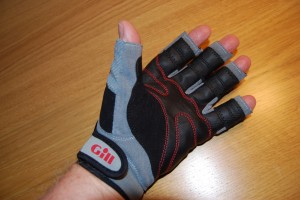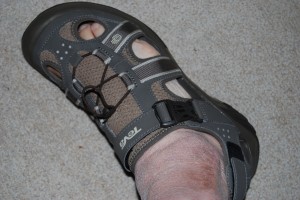“Is it a nice place to be?” asked my wife Jack, with whom I can now chat using FaceTime every day.
I did not know whether the question refered to my sister’s house or the wider environment of this island set shield-shaped about 4 miles from the Malaysian mainland, located at the north end of the Straits of Malacca and containing Malaysia’s second city, Georgetown.
Just a moment, I must pause as La Traviata reaches its supreme sacrificial ending on my iPod… OMG if I were Alfredo I would have looked after her more. But then again, perhaps she casts herself as a victim and cannot play any other role. Oh how it pierces the heart to hear her say she is getting better as she slowly dies in imperial dignity!
But back to Jack’s question, first I will say that to me the house is not far from ideal. It is located in a slightly cooler area than the narrow and previously marshy coastal plain, some way up Pearl Hill. It is on a terrace, dug in at the back into the side of the rising hill, but the road on which it fronts is almost level, passing at right angles to the slope. The house is detached and there is a fairly narrow concreted path all the way round, with a ‘parit’ (Malay: storm drain) under the deeply overhanging eaves. There is a broad verandah on one side and a jungly patch on the other. It is set back 6 metres from the road, with a well designed garden infrastructure of paths and beds, supporting a riot of flowering shrubs and including some moderate sized trees. At the front is a car port and another broad verandah inhabited when it rains by the three dogs.
Inside there are 2 bedrooms with A/C each with a bathroom, a broad hall giving access to the bedrooms on one side and the sitting and dining rooms on the other. There is a kitchen behind the dining room and a vast scullery leaning-to across the back of the house, incorporating the parit, which is neatly bridged with aluminium grill panels. There is a third bedroom without bathing facilities, or perhaps sharing mine. Every window is protected by diamond-shaped metal grills. These are hinged to allow access to the verandahs. This high level of security is needed against the penchuri (Malay: robbers) which might otherwise come in a gang by night and pass your possessions out in a chain.
This happened to our parents in the 50s, when a servant inadvertently left a grill unbarred one night and the lithe oiled bodies of the penchuri flitted soundlessly from room to room. Our mother, who was a small person, but very fierce especially when at bay, nonetheless woke and at first she thought in that pre-air-conditioned age that a firefly had come in from the night. When she realised it was a dimmed torch she leaped up with a huge shout and the men in the penchuri chain dropped whatever they were passing at that moment and as one man took to their heels, leaving cameras, radios, record-players, tins of food, in fact all our possessions, strung out across the very extensive grounds we had in those days, including two full-sized games courts.
At that time it would have been awkward for us to keep dogs. For one thing there was no fencing between the individual plots of government housing, and indeed it had to be easy for the Public Works Dept (PWD) gardeners to move smoothly from house to house. For another it would not have sat well with our servants, who were Malays to whom, being Muslims, dogs are unclean animals.
Another difference is that my sister’s bungalow is guarded on the road front by a huge electrically operated security gate. The back is too steep to allow access and abuts more private property. At each side there is a strong fence demarcating the gardens of the adjacent houses, and as I have said, we allow the jungle to take back a bit of its lost luxuriance. These picturesque predispositions have earned my sister the soubriquet of ‘the jungle woman’ locally, for all our neighbours hack slash and extirpate, allowing only a few sparse and uniform lines of specimen plants.
So to me this house is supremely comfortable and deceptively spacious, affording perfect settings for cool breakfasts in bed, tiffins under slowly rotating fans, evening ginslings as the brief tropical dusk fallsgolden, and secure comfort for dining and reclining. Nights can be noisy with dogs barking, but the backgound scream of cicadas is absent here, although nowadays it would be completely muffled by aircon.
If however Jack’s question was directed at the wider environment of this island which some have called the jewel of the east, then I will start off by saying that Georgetown has become a world heritage site, its grid plan still reflecting the urban plan laid out by the founder, Francis Light, in 1786 before which almost the whole island was impenetrable jungle.
It’s said that to start the clearance Light landed his ship’s cannon and loaded them with silver dollars, firing them off each day at dawn to encourage the workmen. After eight years of hard work, Light died off form fever, but by then he had overseen the first development of the town which subsists to this day, and although he names of the streets have been malayanised, the original proper names have been consistently preserved, so that Light Street has only been changed to Lebuh Light, and Scott Road only to Jalan Scott. Maintaining these links with the past is of course a wise move from the tourist point of view as the sense of continuity reassures foreigners, but it also perhaps suggests that the islanders still retain a sense of their old independence from the mainland government.
I am horrified that the coast road, which in my youth was a simple two-track affair, with occasional cars, and many pedal cycles, have become six-lane highways, choked with 4x4s and all the bicycles have become cheap Japanese motorbikes. I am aghast at the development of high-rise housing, invading the foothills of the mountainous centre of the island. So far the dense jungle of the higher slopes has in the main remained untouched, although since 1903 there has been a railway up to the cool top.
From the Convalescent Bungalow, located almost at the summit, you can on a clear day look out to the answering majesty of Kedah Peak (Malay: Gunong Jerai), the greater range adjacent on the mainland, a characteristic shape supported by a huge sprawling base, penetrated by many rivers. As you move about on the more populous east side of Penang island you continuously catch glimpses of the Peak across on the mainland, each from a slightly different angle, but always familiar.
Well, as you see, I am trying to paint a favourable picture of both the immediate and the wider environment, my waiting room as I prepare myself to join the yacht in three days time. You will see that this shore is anything but strange to me, and even now, when my parents who lived here are long dead, there is a part of me that recognises this island as my childhood home.
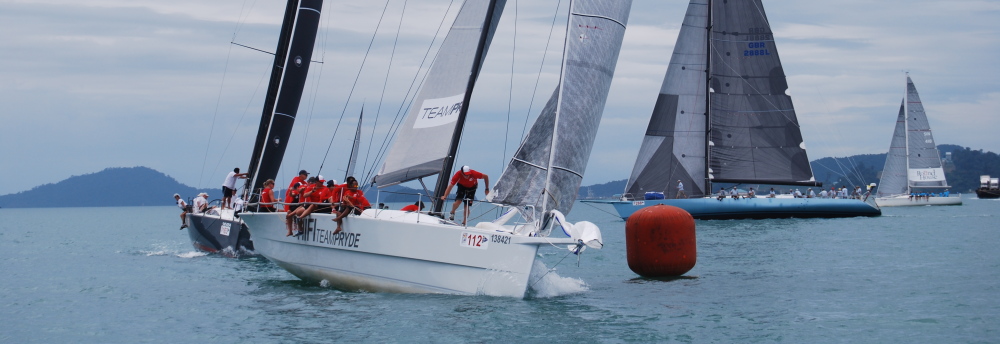
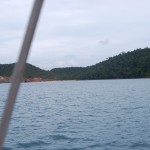


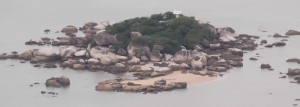
![AW[1]](https://seatrack.info/wp-content/uploads/2012/10/AW1-300x211.jpg)
